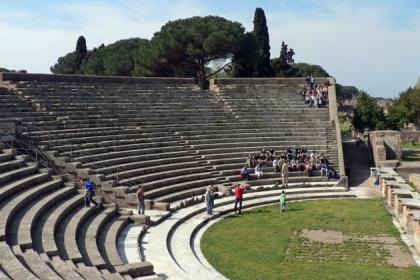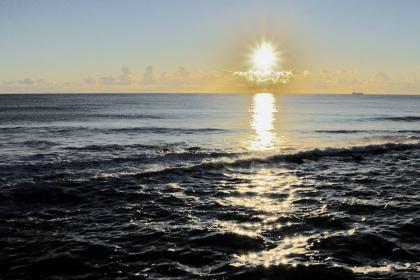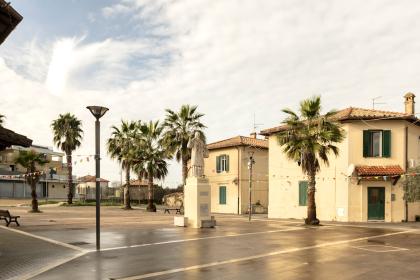The area where the Village of Ostia Antica stands was occupied by necropolis in the imperial age. In the 5th century, a basilica was built on Saint Aurea martyr's tomb site. Restored over the following centuries, in the 9th century it became the centre around which the Village, built by Pope Gregory IV to protect the few inhabitants of the area from Saracen incursions, developed. This first settlement, defended by walls, was given the name of its founder: Gregoriopoli.
As the area was strategically important for controlling river traffic and for the presence of salt pans, the monopoly of which was held by the Curia, Pope Martin V had a round tower surrounded by a moat built to guard the Tiber in the 15th century. Further development of the Village was due to Cardinal William d’Estouteville, Bishop of Ostia between 1461 and 1483, who had the walls restored and improved the conditions of the residents by building three rows of terraced houses, still inhabited today.
In the following years, between 1483 and 1487, Cardinal Giuliano della Rovere, the future Pope Julius II, undertook the construction of the Castle at his own expense, based on a design by Baccio Pontelli (as indicated by the inscription on the portal leading to the courtyard). A fine example of Renaissance military architecture, the compound includes a perimeter circuit of casemates (firing chambers) linking three towers (one of which incorporated Martin V's tower), a “rivellino” (a defensive building placed to further protect the access gate) and a large moat. The strategic-military value was partially attenuated, in later years, by the construction of residential rooms and a monumental staircase, decorated with polychrome frescoes attributed to the school of Baldassarre Peruzzi.
The flooding that diverted the course of the Tiber in 1557 and the malarial swamps that gradually formed led to the decline of the Castle and the Village was abandoned.
In the 19th century, the castle housed prisoners condemned to forced labour, with whom Pius VII and Pius IX began the first archaeological excavations in Ostia Antica.
Parco Archeologico di Ostia Antica

 Condividi
Condividi
The sea of Rome

The marine soul of Rome
Borghetto dei Pescatori - The Fishermen Village

 Condividi
Condividi
Flavours and ancient traditions in a place where time seems to have stopped
Information
 Condividi
Condividi
Location
To find out about all accessibility services, visit the Rome accessible section.











































